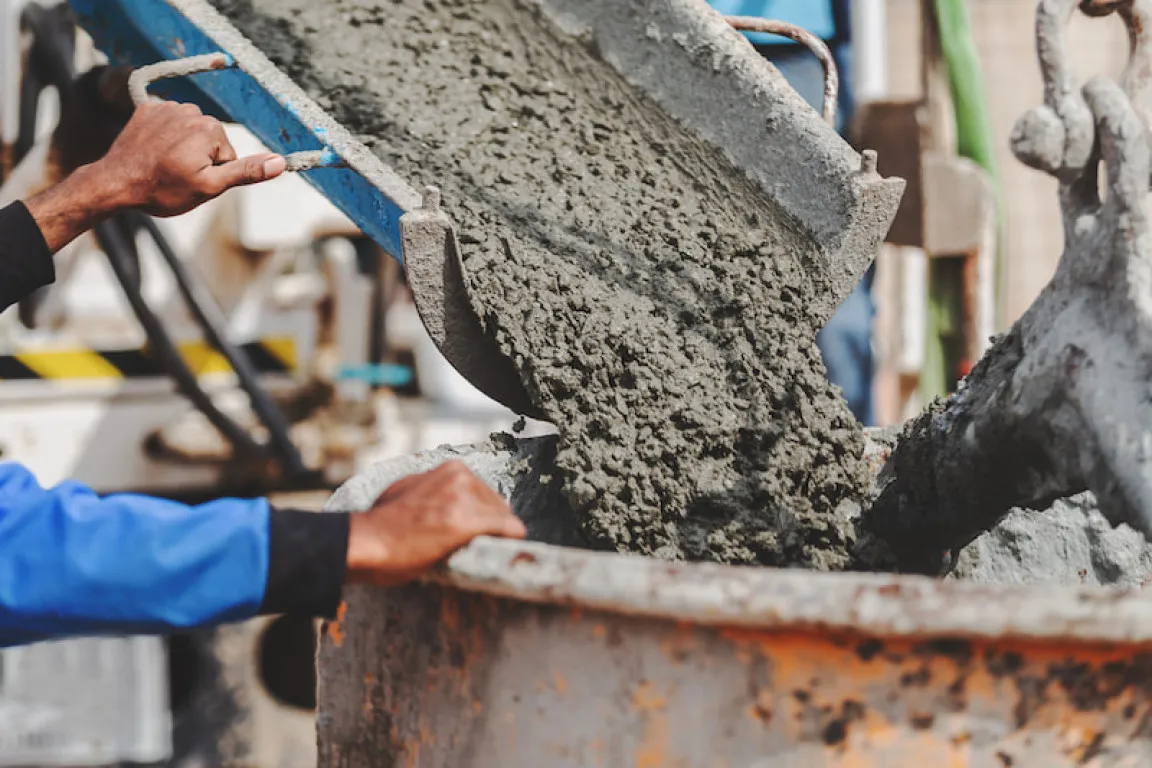A concrete roof slab structure consists of various building materials, such as cement, sand, gravel, and water, that are mixed in the right concrete mix ratio. Also, concrete roof slabs must be built as solidly as possible to support the weight placed on them. Therefore, understanding what makes a good concrete roof slab structure is crucial.
In addition to the four main building materials mentioned above, it is also important to understand the role of reinforcement steel and the correct use of formwork or molds when needed, as these elements will form a strong concrete roof slab structure. To gain a deeper understanding, be sure to read this article!
The Functions of Concrete Roof Slab Structure
A roof slab is a part of a building that serves as a divider between the upper and lower floors. A concrete roof slab structure must be strong enough to bear loads and protected from deterioration.
While its primary function is safety, a concrete roof slab also serves several other purposes. Here’s a closer look:
1. Supporting the Load of the Upper Floor
The concrete roof slab structure must be built strong and sturdy. A concrete roof slab, especially when used as an upper floor, will bear the weight of people and household furniture. Thus, even if the roof is only used as a small balcony, drying area, or garden, the concrete structure must still be capable of supporting the load.
2. Flexibility for Adding Extra Floors to Your Home
If your home has a concrete roof slab, you can easily convert it into an additional floor. This flexibility is not available with roofs that do not use concrete slabs. With that being said, concrete roofs also have long-term investment value.
3. Adhering to Specific Architectural Styles
A concrete canopy over the front terrace can enhance the beauty of your home. In modern minimalist architecture, concrete roof slabs are often used for multifunctional decorative purposes, all while preserving a simple and clean aesthetic.
4. Cost Efficiency in Home Maintenance
Concrete roof slabs are a critical part of a building that requires attention to quality. If the roof develops leaks or cracks, renovations will be required, as these issues can worsen over time. Moreover, a roof that fails to prevent water seepage can also damage the walls and electrical systems of the home.
Read also: Concrete Grade: Types and Classification Table
How to Build a Concrete Roof Slab Structure for the Second Floor
Building a concrete roof slab structure for the second floor requires careful planning. In addition to using reinforcement steel, you can also use ceiling bricks. The choice of materials will ultimately depend on your construction plan and budget. Below are the steps to follow:
1. Prepare the Necessary Building Materials
First, you need to prepare sand, gravel, water, steel, formwork boards, and high-quality cement. Make sure to choose cement that meets SNI standards and has been tested for quality. As mentioned above, you can also use ceiling bricks. However, make sure you consult with a contractor or construction supervisor first.
2. Carefully Plan the Construction Process
Before starting the construction, you must plan the project thoroughly. For instance, consider the future purpose of the concrete roof slab to determine the appropriate thickness needed. Additionally, you also need to take accurate measurements of the slab and choose a design that aligns with your specific requirements.
A concrete roof slab is not only used as an additional floor, but it can also serve as a balcony, canopy for doors and windows, or even a terrace. Therefore, if the slab is intended as an extra floor, not all areas will be used as main living spaces. This means varying slab thicknesses may be needed for different sections.
3. Install Supporting Construction Elements
Several supporting elements are essential for the casting process, including formwork boards, formwork supports, wooden columns, scaffolding, and others. These tools are used to shape the concrete mixture according to the design and provide access for the workers. Thus, you have to ensure all equipment is in good condition to maintain safety throughout the construction process.
For home construction, you can opt for wooden formwork, as it is sufficient for constructing a second-floor slab. Also, do not forget to assemble the reinforcement steel for the slab before pouring the concrete mixture over it.
4. Start Preparing the Concrete Mixture
Concrete mixtures have their own specific ratio. You can start by combining cement, sifted sand, gravel, and water. You can also add a concrete accelerator to speed up the construction process. Then, mix all the ingredients thoroughly using simple tools like a hoe, shovel, or a mixer.
5. Apply the Concrete Mixture to the Prepared Area
Once the concrete mixture is ready, you can pour it into the prepared area. Before starting, make sure that all supporting structures, such as the formwork and reinforcement steel, are properly in place. After that, you can pour the mixture evenly to cover the entire area.
After applying the concrete mixture, you should spray it with water. This is important because the water in the mix can evaporate, causing the concrete to lose moisture. Without adequate moisture, the concrete may crack as the water evaporates before the concrete reaches its optimal hardness.
Tips for Strong and Safe Concrete Roof Slabs
Concrete roof slabs must be constructed to be strong and durable, as they support the weight of the building's structure. Here are some tips to ensure that your concrete roof slab is safe and suitable for various uses:
1. Understand the Desired Thickness of the Roof Slab
Not all areas of the roof have the same function. The main area should have a minimum slab thickness of 12 cm while supporting areas can have a minimum thickness of 10 cm. For more detailed information, refer to the article below that explains this in-depth.
Read also: Characteristics and Ideal Thickness of Second-Floor Slabs
2. Check the Quality of the Concrete Mix
You need to make sure that the concrete mix has the correct proportions of sand, cement, gravel, and water. An incorrect mix can weaken the concrete or make it too hard, affecting the overall budget efficiency.
3. Add Admixtures to the Concrete Mix
Construction workers often add admixtures to the concrete mix. These admixtures, such as plasticizers, help speed up the curing process and make the concrete more water-resistant. These substances, commonly known as concrete accelerators, should be measured according to the pouring requirements.
4. Use Good Quality Formwork When Necessary
Formwork is essential for holding the concrete mix in place during the pouring process. Thus, you need to ensure that the formwork you use can withstand the weight of the mix and is not in poor condition. If needed, use new formwork rather than recycled ones. With high-quality formwork, you will improves the final finish as well as speed up subsequent plastering processes.
5. Consider Pouring Concrete at Night if Possible
The heat from the sun during the day can cause the water in the concrete mix to evaporate too quickly, which disrupts the curing process. To overcome this, you can actually pour concrete at night. However, due to tight construction schedules, accommodating such delays may not always be possible.
That was the complete explanation about concrete roof slab structures, how to build them, and some tips to ensure the final result is strong and safe. Since the quality of a concrete roof slab is closely related to the safety of a house or building, it is important to understand this matter thoroughly.
In addition, you should always choose the construction materials that meet SNI standards when building a concrete roof slab, as they have been proven safe and reliable, backed by numerous construction projects.
A good concrete roof slab should not only support heavy loads but also withstand extreme weather. For this reason, choose only Semen Merah Putih Watershield as the preferred cement for building your concrete roof slab. Semen Merah Putih Watershield is ideal for constructing building components that require extra strength and protection.
Semen Merah Putih Watershield is equipped with water-repellent technology that strengthens the structure with triple protection against water seepage; from inside the house, from outside, and from the ground. This ensures that your concrete roof slab will be more durable, require minimal maintenance, and remain strong.
Not only is Semen Merah Putih Watershield perfect for concrete roof slabs, but it is also excellent for other construction needs, such as wall plastering, floor screeding, finishing, and pouring. This versatile cement excels in every stage of the construction process.
Are you currently working on a construction project? Then, choose only high-quality cement like Semen Merah Putih Watershield for your concrete roof slab and other home renovation needs to achieve better and stronger results. Contact us now for more information and ensure your concrete roof slab is strong and protected.
Read also: Knowing 3 Unique and Innovative Building Materials



